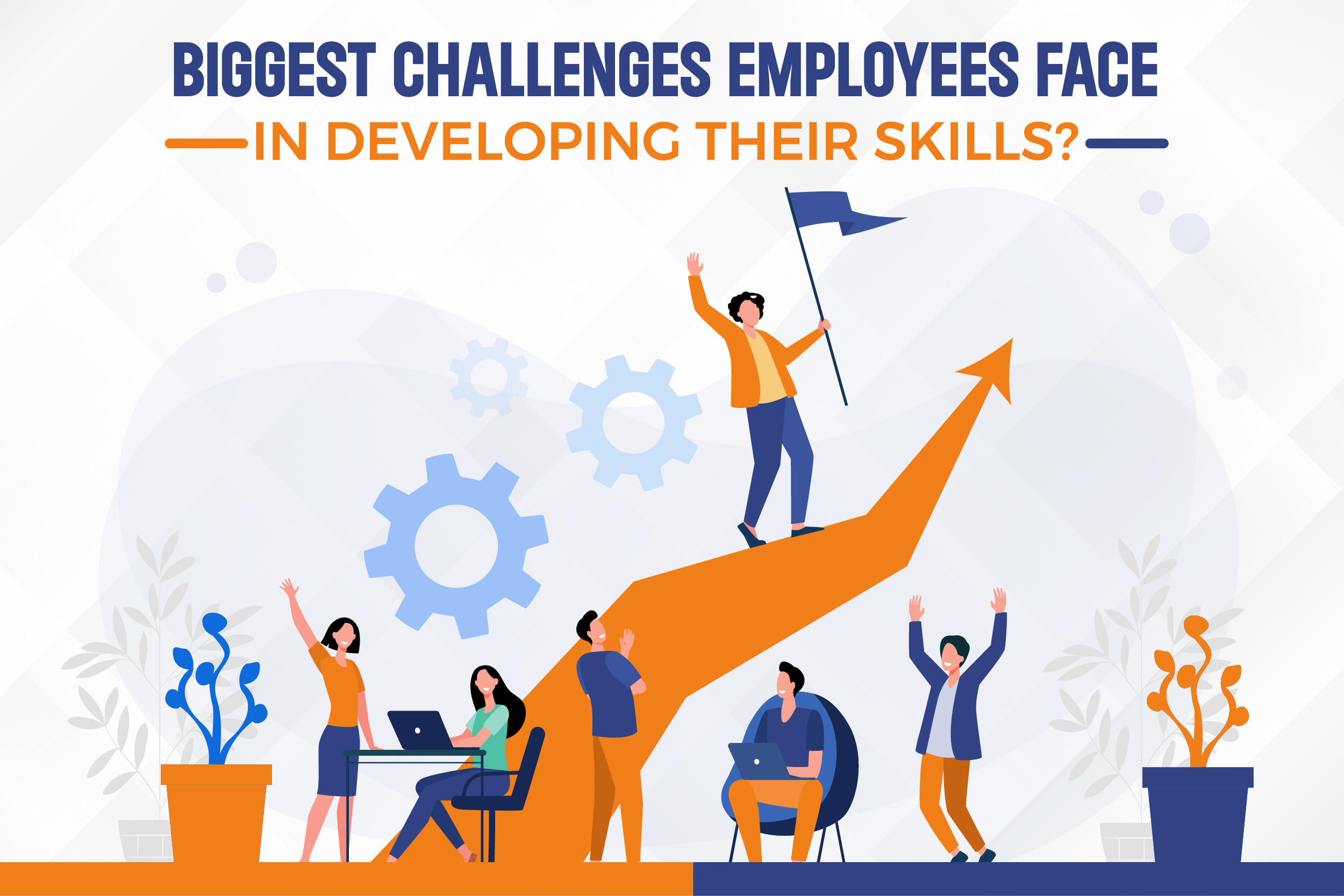
Biggest Challenges Employees Face In Developing Their Skills?
You can’t deny the fact that employees are the cornerstones of an organization. Hence, an invaluable thing needs invaluable care as well. And the best possible care that you can provide is by developing and upskilling them. But think again! Isn’t this a win-win situation? Their development will ensure higher efficiency, as a result, higher productivity. Did you just identify the cascading effect?
Therefore, it becomes crucial for businesses to support the development and overall experience of their workforce. Enterprises frequently assume that keeping new staff productive after onboarding is more than enough. However, employees are subsequently forced to change employment as a result of this because onboarding is insufficient. To keep staff engaged and productive, you need excellent and continuous training.
According to a recent poll by go2HR, 40% of employees who receive a subpar job or Leadership Development Training quit the company within a year.
Top talent may be included in this 40%. Training managers are responsible for handling concerns with employee upskilling. Whatever the complexity, How you organize your training and development programs is what matters.
6 Critical Employee Training Challenges
An outstanding Leadership Training initiative gives rise to highly-skilled leaders within your company. As a result, it’s worth investing in a training program like that.
Therefore, let’s go through some typical challenges that employees face during employee or Leadership Training Program that come up while you are onboarding your recruits and teaching them how to utilize enterprise software or upskilling and reskilling your existing employees.
1. Overload Of Information
Onboarding new employees is usually a company's first priority after recruiting them. The goal is to successfully teach new employees about your enterprise software so they can begin to produce.
However, they regrettably end up doing the opposite. They overwhelm new employees with information and expect them to absorb all of the knowledge from day one of a training session, which becomes challenging for employees.
The result: Employees may get overworked, start to lose interest in training, and eventually abandon your company. Less than 35% of US workers, according to a report by tech jury, feel engaged at work. The explanation is straightforward: even intelligent employees require time to learn new software.
Train your potential employees to lead effectively with the help of a good Leadership Training Program.
2. Resistance In Workforce
One of two things can happen when you introduce a new product or piece of software to your company.
- The first case scenario is that staff members accept the modification and begin using the program.
- The second scenario is one in which staff members feel stressed and fight change.
Naturally, Scenario #2 must be dealt with correctly and swiftly in order to benefit from the freshly purchased software. Otherwise, no level of training will be able to change the problem.
In order for a change to occur, you must have a suitable change management strategy that can help people comprehend why the change is necessary and the benefits it will offer. A Gartner research claims that 50% of organizational transformation is a blatant disaster.
As a result, more employees with potential should be identified in your organization and honed with proper Leadership Development Training to perform leadership roles and effectively lead organizational changes.
3. Dull Versus Periodical Works
These two activities—redundant or daily chores and rare tasks that arise periodically or quarterly—may make your staff uneasy. And each of them has a unique set of difficulties. Periodical jobs may be difficult for your staff to remember how to execute, while redundant work might make workers tired.
4. Employee Disengagement
A U.S. research on employee engagement found that disengaged workers cost businesses between 450 billion and 550 billion dollars annually. This is a common challenge that employees face and which also demonstrates the significance of employee engagement and the effects it may have on your business.
Employees that are disengaged fail to provide their optimal efforts to their jobs and may foster animosity among coworkers. Because of this, it's critical to provide them with the proper resources to maintain their motivation and instill in them the belief that they are important resources for the business. An excellent strategy to increase engagement is to give them the tools they need to become independent and stop asking for help all the time.
Another one is certainly providing them with the right training, such as Leadership Development Training for employees who have built-in leadership skills or are willing to undertake a leadership role. This is one of the best ways to convey your care to the employees and make them realize that their efforts are valued by the organization.
5. Employee Barriers
Surely attending a training session or even finishing it does not indicate a rise in worker productivity. Once customers begin using the program, they may run into a number of difficulties. An employee cannot complete a task successfully because of these obstacles. All of them must be addressed.
If you don't address the issues that employees have after receiving training, productivity suffers and your ROI may decline. The only way ahead is to recognize and aggressively address staff application use issues. However, it's sometimes challenging for businesses to pinpoint the precise cause of an employee's problems, and things only get worse from there.
6. Inadequate Support And Feedback Systems
The IT staff continuously monitors employee input as part of the employee support process. Employees are 4.6 times more likely to do their best work when they feel that their opinions are acknowledged, as per Forbes. Additionally, 89% of human resource leaders concur that frequent check-ins and continuing peer input are essential for effective outcomes.
Final Thoughts
Let's imagine one of your workers is having trouble and submits a ticket to the IT staff for help. What if there is a protracted delay or the problem is not adequately addressed? The task then becomes unfinished, putting the subsequent procedures in jeopardy. Now picture tens of thousands of workers dealing with problems on a regular basis, both big and minor. and your IT staff not providing them with the type of proactive assistance they would require!
Your employees' productivity suffers on the one hand, and your IT team is going crazy trying to handle all the tickets on the other! Then indeed it's high time to invest in a more effective system.
